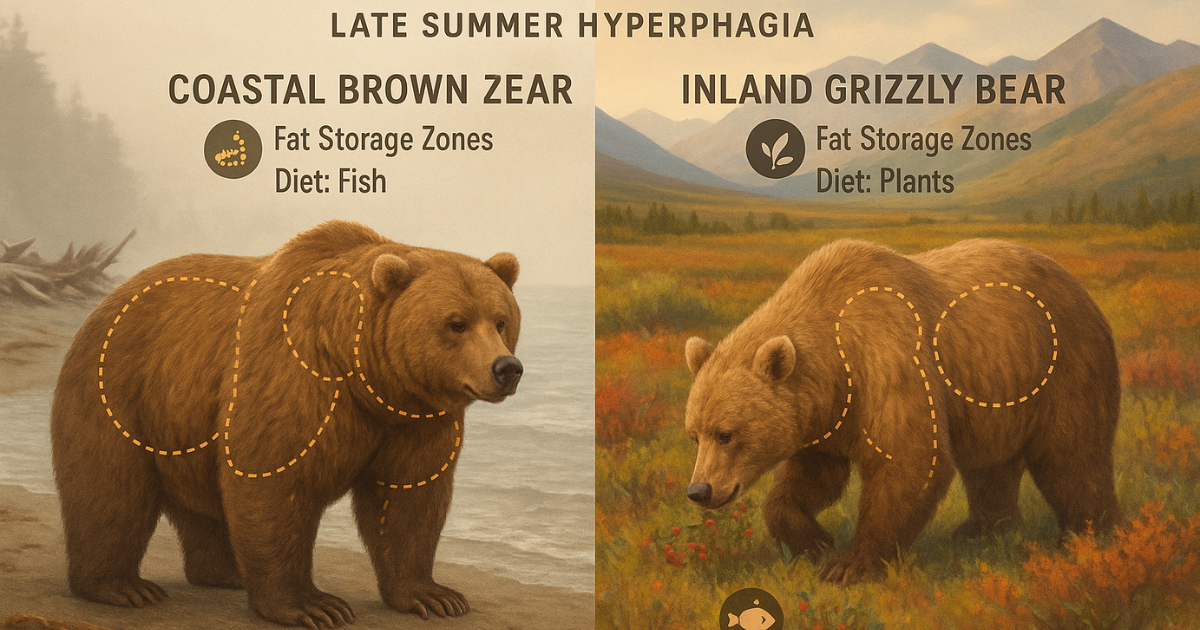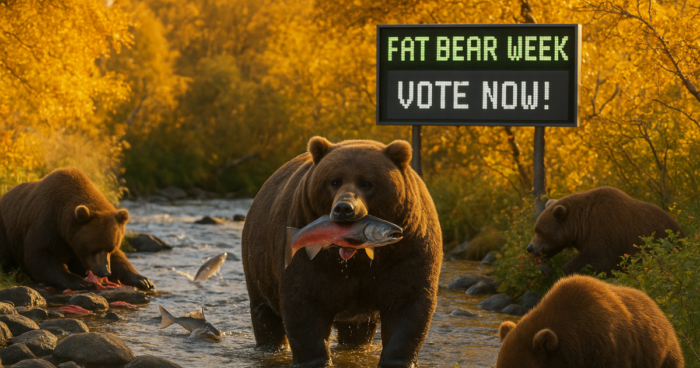Before Alaska’s bears retreat into winter dens, they undergo an intense feeding phase known as hyperphagia. During this time, their appetite becomes insatiable as they prepare for hibernation. This phenomenon has captured public imagination through the popular event known as Fat Bear Week, where individual bears compete online for the title of fattest bear. Hyperphagia & Fat Bear Week showcase how Alaska’s bears bulk up in preparation for winter’s long fast, illustrating a critical evolutionary adaptation.
Understanding Bear Hyperphagia Behavior
Bear hyperphagia behavior is characterized by a marked increase in food consumption, sometimes doubling or tripling their usual caloric intake. This allows bears to build massive fat reserves essential for survival during hibernation when they won’t eat, drink, or excrete.
This phase is part of the broader seasonal feeding patterns in bears, which align with natural food availability. In late summer and early fall, bears forage nearly non-stop, targeting high-calorie foods like salmon and berries to meet the energy demands of the coming months.
Fat Accumulation and Metabolism During Hyperphagia
The fat accumulation in bears during hyperphagia is nothing short of remarkable. Brown bears, in particular, can gain several hundred pounds in just a few months. They prioritize nutrient-dense foods and spend up to 20 hours a day eating.
The bear metabolism during hyperphagia shifts dramatically. Unlike in humans, where rapid weight gain can lead to disease, bears enter a unique metabolic state that prevents insulin resistance and other health issues.
This pre-hibernation weight gain prepares bears for dormancy by storing energy as fat. These reserves must last through the hibernation period, which can stretch from five to seven months depending on the region and bear species.
Fat Bear Week Celebration in Alaska
The Fat Bear Week celebration in Alaska is an annual event hosted by Katmai National Park and Preserve. It turns the bears’ natural preparation for hibernation into an engaging conservation campaign. Photos of bears in early summer are compared to their massive frames in fall, and the public votes on their favorite transformation.
This event promotes wildlife awareness campaigns and emphasizes conservation education, highlighting the importance of healthy ecosystems and salmon populations for bear survival.
Species-Specific Fat Storage: Brown Bear vs Grizzly Bear

Brown bear fat reserves vary depending on diet, habitat, and behavior. Coastal brown bears often have access to more abundant food sources, especially salmon, allowing them to pack on weight more efficiently.
Inland grizzly bears may need to rely more on plants and scavenging, which can affect how much fat they store. Their strategies differ due to environmental constraints and species physiology. For more on the biological differences influencing fat storage, see our comprehensive guide: brown bear vs grizzly bear.
Ecological Importance of Weight Gain Strategies
Wildlife weight gain strategies like hyperphagia are essential not just for survival but also for reproduction. Female bears must build enough fat reserves to sustain themselves and their cubs through birth and lactation during hibernation.
The Alaskan bear feeding frenzy observed in late summer is a vital ecological event. It supports ecosystem dynamics, as bears distribute nutrients across landscapes by dragging salmon carcasses into the forest, fertilizing the soil, and sustaining other species.
Conclusion
Hyperphagia represents a remarkable adaptation that ensures Alaskan bears survive the harsh winter months. Fat Bear Week offers a fun yet educational glimpse into this crucial process. Hyperphagia & Fat Bear, reinforcing the significance of seasonal feeding and fat storage. Explore how fat storage varies among species in our pillar article: brown bear vs grizzly bear.


